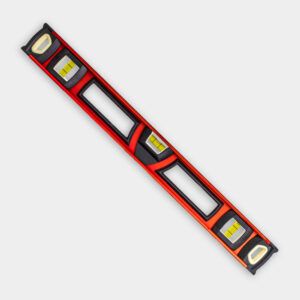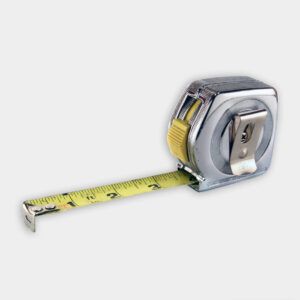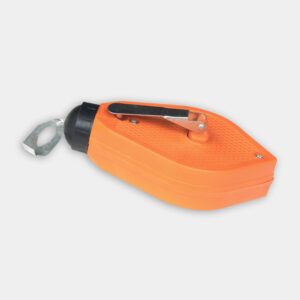We may be compensated if you purchase through links on our website. Our team is committed to delivering honest, objective, and independent reviews on home products and services.
Installing a handrail is a home improvement project that makes your stairs safer and easier to climb. A well-installed handrail is particularly helpful in homes with elderly residents or young children for added support.
In this article and the video above, This Old House general contractor Tom Silva will show you how to install a stair handrail to meet building code requirements and achieve a professional result.
Understanding Building Code Requirements for Stairs
Before beginning your handrail installation, familiarize yourself with local building codes. These regulations guarantee that your handrail is safe and compliant with industry standards. Understanding these requirements will help you avoid any safety hazards or future inconveniences.
Height Requirements
Building codes typically require handrails to be installed at a specific height range. The standard height for stair handrails is between 32 and 34 inches, measured from the nose of the tread to the top of the rail. This height range provides the best support and safety for most users, accommodating the average arm reach and height of both children and adults.
Continuous Graspability
Install the handrail along the entire length of the staircase to guarantee that users can keep a firm grip on it during their ascent or descent. The handrail should extend beyond the top and bottom steps to provide additional support at these base points. Continuity is key.
Clearance From the Wall
For a comfortable grip, you should install your handrail with enough clearance from the wall. Most building codes require a minimum of 1.5 inches of space between the handrail and the wall. This gap helps users wrap their fingers around the rail without interference. Too little clearance can make the handrail difficult to grasp, defeating the purpose.
Gathering Tools and Materials for Stair Handrails
Organizing your tools and materials in advance can save you time and hassle. Here are the items we recommend having on hand for this project.
Tools
- 4-foot level
- Chalk line
- Drill with 7/64-inch bit
- Hammer
- Pencil
- Power miter saw
- Screwdriver
- Stud finder
- Tape measure
Required Materials
- Handrail
- Mounting brackets
- Primer and paint or stain and varnish (depending on your finish preference)
- Sandpaper
- Screws
- Wood filler (if needed)
- Wood glue
Measuring and Marking Handrail Materials
This project can’t be successful without accurate measurements, so follow these steps closely:
- Place a 4-foot level vertically against the first step, making sure it’s plumb.
- Mark the level where it meets the top of the second step.
- Calculate the desired handrail height (between 32 and 34 inches) and mark this point on the level.
- Use the level to transfer these marks to the wall at the top and bottom of the staircase.
- Snap a chalk line between these marks to create a guide for bracket placement.
These initial measurements and markings are incredibly important. Precision in this step makes the rest of the installation process easier and more accurate.
Locating Wall Studs for Handrails
Use a stud finder to locate the studs along your chalk line and clearly mark their positions. Aim to attach brackets at the top, middle, and bottom of the staircase for the best possible support. Locating and marking the studs correctly anchors the handrail securely, which is critical for safety.
Installing Handrail Mounting Brackets
With your measurements and stud locations marked, you’re ready to install the mounting brackets. Here’s how to do it:
- Drill 7/64 inch-diameter screw pilot holes at the marked stud locations along your chalk line.
- Secure the brackets to the wall using the appropriate screws.
- Check that each bracket is level and firmly attached to the wall.
Leveling and secure mounting of your brackets are essential to the handrail’s stability and longevity.
Preparing the Stair Handrail
Follow these steps for a polished final result:
- Measure the length needed for your staircase, accounting for any returns at the ends.
- Use a power miter saw to cut the handrail to length, making 45-degree cuts at each end for returns.
- Sand the cut ends and any rough spots along the rail.
- Glue and nail a mitered return to each end of the handrail.
- Apply wood filler if needed, allowing it to dry completely before sanding smooth.
Finishing the Stair Handrail
Before attaching the handrail to the brackets, apply your chosen finish:
- For handrails you’re painting yourself, apply a coat of primer followed by your chosen paint color.
- To stain handrails, apply the stain evenly and follow with a clear protective varnish.
- Allow the finish to dry completely according to the manufacturer’s instructions.
Finishing the handrail to match your home’s interior can boost its sturdiness and design. Whether you choose paint or stain, make sure it complements other woodwork or furnishings in the space.
Attaching the Stair Handrail
With your handrail prepared and finished, it’s time for the final installation:
- Position the handrail on the mounting brackets, checking that it’s level and at the correct height.
- Mark the locations where the brackets meet the underside of the rail.
- Remove the rail and drill pilot holes at these marks.
- Apply a small amount of wood glue to the bracket tops for added security.
- Place the rail back onto the brackets and secure it with screws from underneath.
Final Adjustments and Handrail Safety Check
After installation, it’s wise to do a safety check:
- Check that the handrail height remains consistent along the entire length.
- Make sure all screws are tightly secured and countersunk.
- Test the handrail’s stability by applying firm pressure from various angles.
- Verify that the handrail is smooth and free from any protruding hardware or rough spots.
We strongly recommend conducting a thorough final check that tests the security and safety of each handrail component and element.
Additional Tips and Considerations for Stair Handrails
Selecting the Right Handrail
When choosing a handrail, think about factors such as material, shape, and finish. Wooden handrails are popular for their classic look and feel, while metal handrails can offer a modern, sleek appearance. Check that the handrail is comfortable to grip and complements your home’s decor.
Safety Precautions
While installing the handrail, always prioritize safety. Wear protective equipment, such as safety glasses and gloves. Follow the manufacturer’s instructions for all tools and materials. Double-check your work at each step to ensure the installation is in a good spot.
Professional Assistance
If you’re unsure about any part of the installation process or want to meet the highest safety standards, consider hiring a professional. A qualified contractor can offer expert advice and precise installation, giving you peace of mind. That said, most DIYers can easily complete this project as long as they are detail-oriented and accurate with their measurements.





